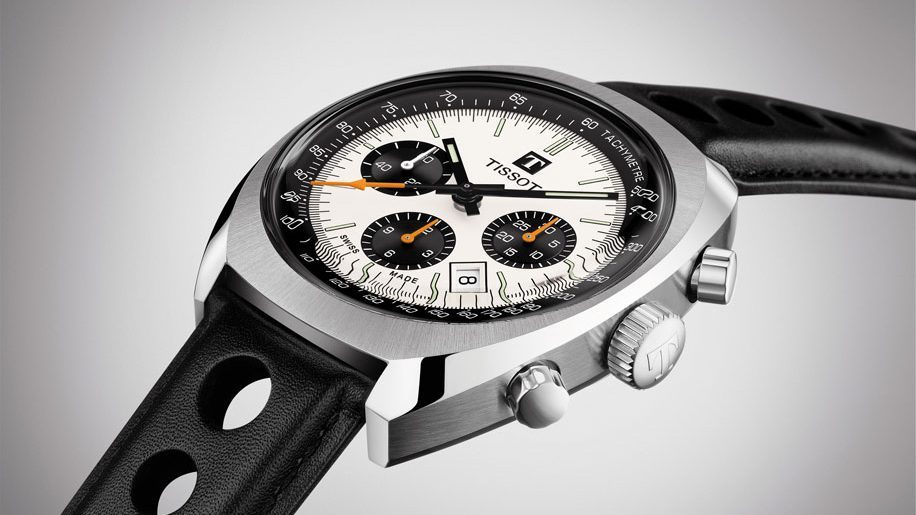
The 1973 Navigator is the perfect accompaniment to Tissot’s revived motorsport connections, says Chris Hall.
The phrase “sports watch” is a funny thing. To a lot of people, it no doubt means something rubberised and digital – made by Garmin or Apple, perhaps – that can track your biometrics and deliver sharp electric shocks when your activity drops below a certain rate. Or something like that; I’m not entirely au fait with such matters.
In contrast, to watch nerds like me, a sports watch is something that, deep in the distant past, was designed to be worn during one of the more monied athletic pursuits, like polo, scuba diving or motor racing.
Of course, even 50 years ago the sporting credentials of these watches were more about marketing than the idea you or I would actually wear one to take part in a sport. But where the Swiss truly did play a fundamental role is in the field of sports timing. Some of the earliest chronographs were developed to time horse races, and up until the digital age a mechanical watch was your best bet for everything from rallying to boxing.
These days, it’s assumed by some that the position of “official timekeeper” is a ceremonial one, when a brand’s mechanical watches may only be accurate to within a few seconds a day. But that’s not so. Swiss Timing – the Swatch Group-owned company that carries out timekeeping duties for the likes of Omega, Longines, Blancpain and Tissot – is a cutting-edge tech firm that is constantly coming up with new ways to measure the finest margins.
It’s a legacy of the clustering of Swiss watch companies into large luxury groups that Tissot doesn’t get to shout too loudly about its pedigree in this department. Under the aegis of the Swatch Group, the world’s largest horological conglomerate, every brand knows its place and for a long time for Tissot that meant unthreatening – predominantly quartz – watches priced between £200 and £500.
Recently, however, a modicum of personality has been allowed to emerge that has brought Tissot firmly back in touch with its sporting past. It is once again sponsor and timekeeper of the Tour de France, having been associated with the race during the late eighties and early nineties, and while other brands have had the privilege at various points, there’s something about this that just feels right.
Still, it’s on four wheels that Tissot has recently rekindled two interesting relationships. The first is with carmaker Alpine – now owned by Renault – as it broke back on to the motoring scene after two decades’ absence. Tissot has been working with Alpine since 2015 via the brand’s endurance racing teams, but the Alpine name had been largely out of the public eye until the acclaimed relaunch of its A110 sports car last year – providing Tissot with some unexpected but welcome publicity.
Perhaps the most surprising rebirth has been Tissot’s keen revival of its partnership with Kessel Racing. Surprising on one level because there is no shortage of watch brands with a motorsport connection – TAG Heuer in particular – but mostly because it’s unlikely that the name Kessel will mean very much to Tissot’s typical customer. Loris Kessel only raced a handful of times in F1, never troubling the top order, but he went on to found a highly successful endurance racing team as well as one of Switzerland’s most prestigious supercar dealerships. Today, the Kessel Racing team (run by son Ronnie) competes at the Monaco Historic Grand Prix in restored Brabham F1 cars emblazoned with Tissot’s original sponsorship position.
Riding on this new wave of automotive celebration is Tissot’s hero piece for the year, a watch known as the 1973 Navigator. It’s a reasonably faithful recreation of a chronograph model originally made in that year, and hits the spot perfectly for today’s market with its barrel-shaped steel case (alternately brushed and polished nicely) and the combination of a black-and-white “panda” style dial with well-judged doses of orange on the chronograph hands. Even the drilled-out leather strap evokes the weight-saving measures of classic racing. It is priced at £1,695 – near the upper end of the range for Tissot, but a pretty fair price to pay for something that looks like it could easily cost twice that.












